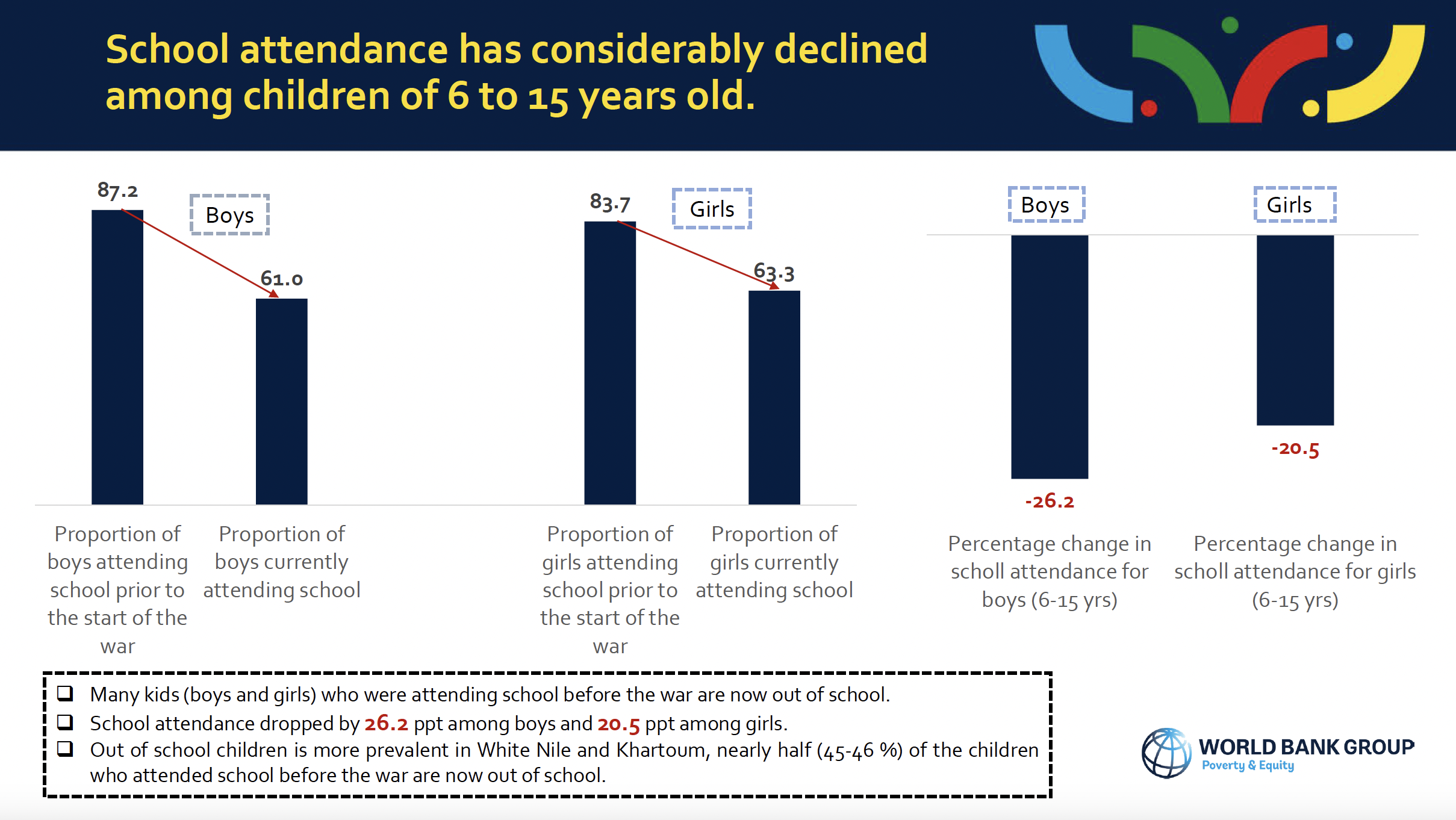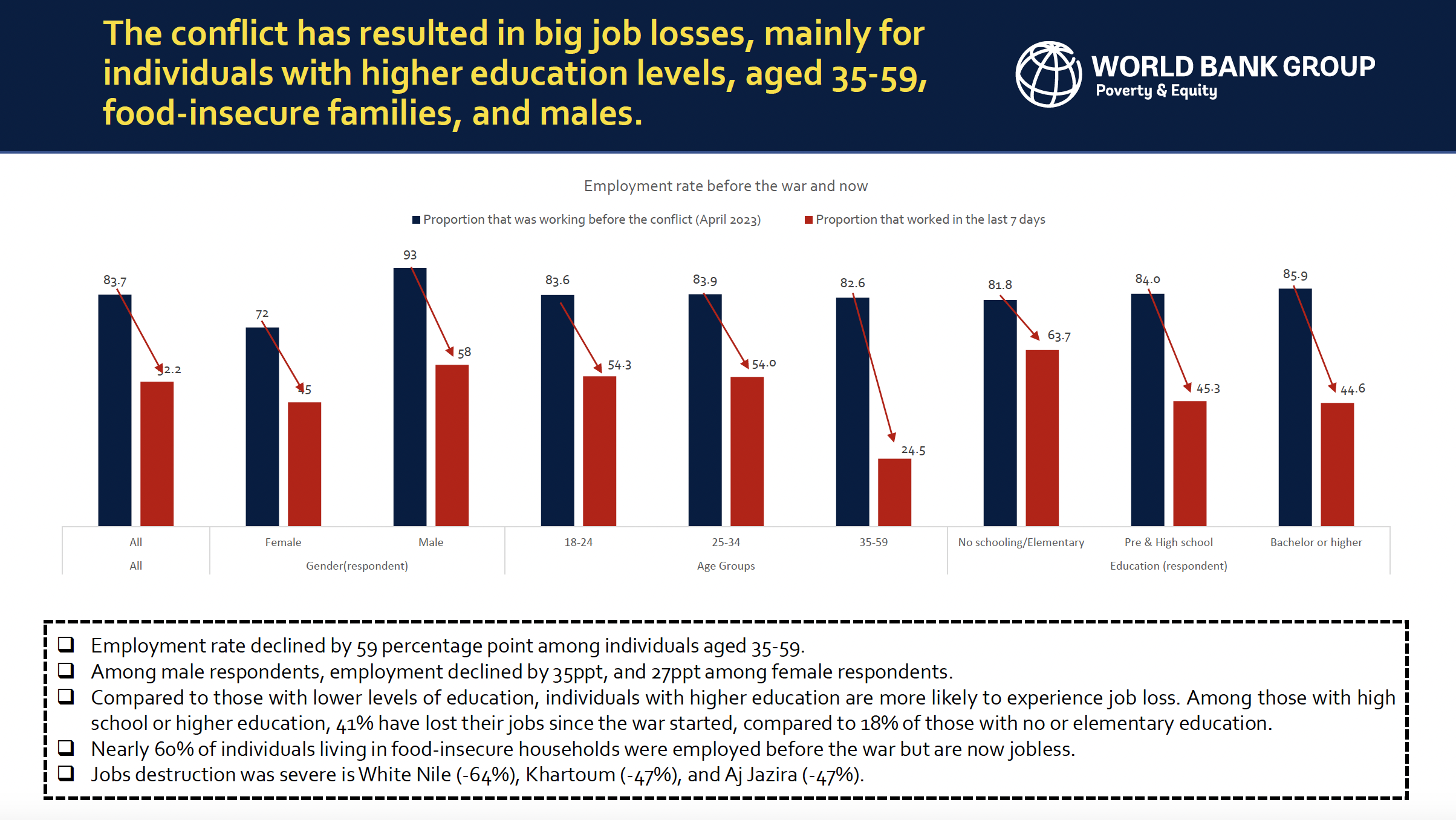Data in Sudan

Data in Sudan
On this page
Sudan High-Frequency Phone Survey (World Bank)
Amid the world’s largest displacement crisis, Sudan’s multi-layered emergencies demand evidence that is both fast and actionable.
The World Bank’s Sudan High-Frequency Phone Survey (funded by the STARS Trust Fund) has been calling households since October 2024, swiftly capturing shifts in displacement, assets, food security, mental health, education and employment. This data seeks to inform policy priorities and project design by the World Bank and other development actors.
The Sudan High-Frequency Phone Survey spans 13 of the country’s 18 states (excluding Darfur and Kordofan) allowing humanitarian actors to monitor conditions in areas remotely. In its first two rounds of the phone survey, the team interviewed roughly 1,330 households each time, with Wave 1 and Wave 2 between October - November 2024. Because participation depends on owning a mobile phone, the respondent pool skews toward adults aged 18 and above who are more urban, better educated and better connected than the national average.
What are the key findings from Wave 1?
- Mobility is largely driven by conflict. 46% of households have been displaced at least once; 40% remain displaced and only 6% have returned. Six in ten displaced households originate from Khartoum, and just 7% live in an IDP camp.
- The conflict has led to asset depletion at the household level. Over 60% of families who owned a home before the war say it has been destroyed, looted or lost; land and livestock losses are widespread in rural areas.
- Food insecurity is one of the largest deprivations. 41% of households have poor or borderline food consumption, going all the way up to 47% in peri-urban areas; displaced and female-headed households fare worst.
- Psychosocial support is warranted, but often absent. One in four persons show signs of depression and some 35% report moderate to severe anxiety prevalence, with higher prevalence among those exposed to intense conflict or weak social support networks.
What are the key findings from Wave 2?
- Lack of education facilities could plague the displaced population for generations. School attendance for 6 to 15-year-olds has fallen by 26% for boys and 21% for girls; nearly half the children in White Nile and Khartoum are now out of school.
- Very few can afford the healthcare they desperately need. 82% of households that failed to obtain treatment cite lack of money as the reason; among the most food-insecure families only 15% accessed the child-health care they needed.
- Unemployment is rampant in areas of high conflict. Employment has collapsed by 35% for men and 27% for women. Job loss is most acute for the better-educated and those in high-intensity conflict areas.
- Lack of proper shelter is a major driver of protection risk among the displaced. The share of households living in makeshift or other precarious shelters has risen from 14% pre-war to 25% today.
- Access to services has dwindled over time. Reliable electricity and piped water have both declined, with water now available fewer than seven days a week for one-third of households.
What is in pipeline for Wave 3?
Wave 3, planned for mid-2025, will expand the sampling frame to include refugees for the first time, thanks to funding from the World Bank-UNHCR Joint Data Center on Forced Displacement and UNHCR’s field-level tracking of beneficiaries. This broader lens will allow direct comparison of refugee and host-community outcomes and sharpen targeting for both humanitarian relief and early recovery programming.
Contacts
World Bank: Franck Adoho ([email protected])
UNHCR: Pankaj Kumar Singh, Senior Operations Officer ([email protected])


